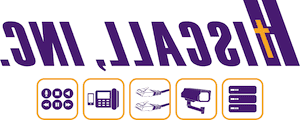But as your technology gets more complex and regulations change, it’s easy to fall behind and make mistakes that lead to non-compliance, worse, put your workforce and organization at risk.
Home » Products & Services » Additional Services »
E911
Emergency services within your communications and collaboration platforms are critical to delivering accurate 911 services to a hybrid workforce.
Kari’s Law and RAY BAUM’s Act
Recent federal regulations like Kari’s Law and RAY BAUM’s Act make capturing precise location information at call time-critical to employee safety.
What is Kari’s Law?
-
Kari’s Law requires the specific digits 911 to be the only digits needed to contact Public Safety and for that call to get there directly. Additionally, when a call is made, a designated person, safety, security team, and a front desk administrator need to receive a notification a 911 call is taking place.
What is RAY BAUM’s Act?
-
Ray Baum’s Act deals with dispatchable locations. Dispatchable location begins with the street address or the civic address. It is complete when it includes floor, suite, and potentially rule number information so that Public Safety can render immediate assistance.
To maintain compliance at your enterprise, you can use dynamic location routing to quickly migrate their communications to the cloud and solve for regulations.
In 911, location is everything. When calling 911, we assume that emergency services know where to find us.
The FCC estimates that if emergency response times improve by one minute, 10,000 lives can be saved each year! With VoIP and smartphone devices, determining 911 location is more complicated than ever. Pinpointing caller location has gotten harder as callers now are more mobile than ever before.
Misrouted 911 calls caused by incorrect address information can waste precious minutes. As organizations upgrade their legacy systems, they can break their connection to 911. But don’t worry, 911 doesn’t have to be scary or expensive. Hiscall can help you navigate the complexities of 911 like:
- Moving to the cloud
- Supporting nomadic users
- Enabling software, apps, and IoT devices
- Meeting complex regulations
Spend more time focusing on your core business and less time worrying about whether your users are protected under 911 regulations.
